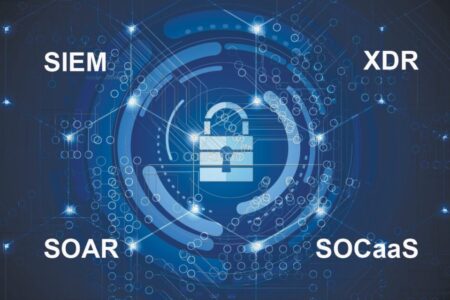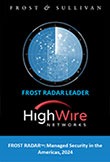As cyberthreats have become more complex, so has the universe of tools available to combat them, including “unified” tools that condense and coordinate threat detection and response. Within this Darwinian stew, security orchestration automation and response (SOAR) and extended detection and response (XDR) have emerged alongside managed security service provider (MSSP) staple security information and event management (SIEM) as powerhouse security solutions that:
- Coordinate resources
- Extend protection
- Simplify event management
- Provide real-time analytics
But confusion about these solutions has also emerged, fueled partly by differences between vendor solutions and rapid product evolution. Many MSSPs struggle to make sense of how SOAR and XDR impact SIEM.
Let’s break them down.
What is SIEM?
SIEM – Security Information and Event Management – merges SIM (security information management) and SEM (security event management) solutions and practices into a single solution. SIEM solutions process log data from multiple inputs to generate centralized analysis and real-time alerts for possible or impending security incidents. SIEM benefits include increased threat intelligence and potential threat identification, faster responses to those threats, and compliance auditing and reporting.
Within a Security Operations Center (SOC) setting, the SIEM also functions as the data repository containing security telemetry from the digital assets deployed in the customer’s environment. Different tools, like SOAR and machine learning search this data, correlate incidents and take action. (more information below)
SIEM and MSSPs
For MSSPs helping enterprises navigate a digitally connected world colored by ever-increasing threats in scope and scale, SIEM has been a powerful solution that collects, unifies and prioritizes security event information from all network connections. MSSPs offer SIEM to customers on a managed or co-managed basis, providing analysis and response based on the data mined and flagged as potential threats by SIEM solutions for maximum protection against cyberattacks.
The benefits of using MSSPs for managed SIEM services include cost advantages, talent access and reduced IT team burdens. With an ever-growing attack surface, cybersecurity becomes a full-time job for many IT teams. MSSPs can manage SIEM solutions and data as part of their security and redundancy portfolios.
What is SOAR?
SOAR – Security Orchestration Automation and Response – is a security operations tool that processes information to get an accurate cybersecurity view and detect and respond to threats, often automatically. A detailed overview of SOAR is available here.
What is XDR?
XDR – extended detection and response – applies the vulnerability-point-oriented, native response capabilities of endpoint detection and response (EDR) infrastructure-wide. In essence, XDR delivers data-driven defenses at the point of cyberattack to contain and remediate threats before they spread to critical systems and infrastructure. More information on XDR is available here.
SIEM vs. SOAR vs. XDR
SIEM, SOAR and XDR are permeating MSSP client discussions as cybercrime skyrockets and clients seek best-in-market solutions. MSSPs need to offer the best possible services – for their customers and their own companies. Here’s how the three technologies – SIEM, SOAR and XDR – emerged, compete with, and complement each other.
SOAR and XDR as SIEM Cybersecurity Alternatives
SIEM Emergence, Evolution and Weaknesses
SIEM emerged as a compliance reporting tool that processed event logs from network connections, connected devices and applications. It has evolved to process and analyze larger amounts of data in real-time, enabling more comprehensive threat detection, but the volume of data and alerts can be overwhelming.
SOAR as a Remedy to SIEM Alert Overload
SOAR emerged to increase response and remediation time, taking in data from multiple tools and sources (including, in some cases, from SIEM – the two solutions are frequently paired) and providing smarter automations (playbooks) for faster and more efficient processing and remediation. This process, in turn, reduces the number of events requiring human attention.
Enter XDR, the Newest Comprehensive Cybersecurity Solution
XDR is the newest iteration of the three. It applies the endpoint detection and response (EDR) concept of protection at the source and extends across all infrastructure (network, cloud, email, apps, etc.). XDR speeds response times and helps to facilitate threat isolation. XDR often integrates with or connects to a SIEM for alert triage, incident correlation and threat hunting. XDR may support automated detection and response, but response actions and customizations are limited (hence the use of a full-blown SOAR solution).
A significant factor contributing to marketplace confusion over SIEM services is that SIEM vendors sometimes retrofit their platforms to include some SOAR and XDR features. This dynamic also contributes to confusion over which solutions deliver the best results – players with vested interests in their technology push narratives that bolster the case for their products. In reality, all three platforms can be complementary, depending on compatibility. All of this said, strong SOAR and XDR platforms, when paired, can give the same functionality of all three together without the bloat.
What About SIEM and SOCaaS?
The terms SIEM and Security Operations Center as a Service (SOCaaS) are often used interchangeably in error – particularly when discussing managed SIEM. While both services process event data, managed SOC services offer a much more comprehensive solution that can ingest and include SIEM data, but also combine the functionality of other technologies into a security outcome.
TIP: When all levels of security services are considered in totality, the right end-to-end product mix that covers all business needs – up to and including SOCaaS – can equip your MSSP to move up-market and across verticals easily.
Choosing the Right Cybersecurity Provider Partner for Your MSSP
In the age of cyber resilience, your MSSP needs its own resilience, too – business model resilience. Look for a provider partner with proven commitments to the channel and evaluating and adopting best-practices methodologies to provide end-to-end, scalable solutions you can bank on today and well into the future. In the end, just like your customers, your business is only as resilient as the cybersecurity partner it relies on for support.
Blog courtesy of Stephan Tallent, Chief Revenue Officer, High Wire Networks’ Overwatch Managed Security Division









